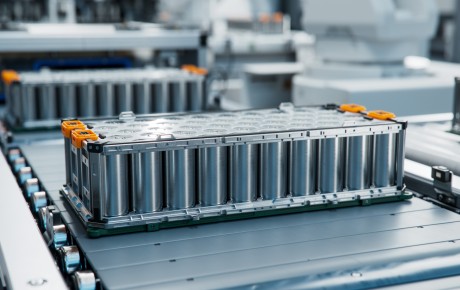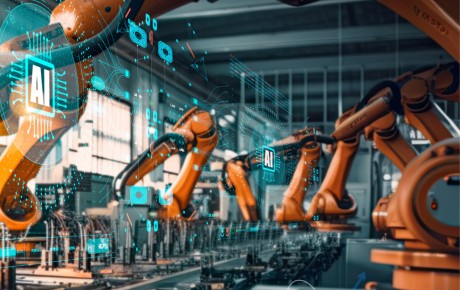
Look, no hands! Autonomous vehicles get the green light
There are still obstacles to clear before autonomous vehicles become a regular sight on our roads, but insurers are embracing the growth of this new technology.
Coming to a road near you soon will be an autonomous vehicle. Whether it’s carrying passengers or this week’s groceries, there won’t be any human in the driving seat; in fact, there probably won’t be any driving seat. While the hunger for autonomous driving technology is far from new – General Motors developed the first self-driving car operated by radio controlled magnetic fields back in 1939 – it seems the world is finally on the brink of a more mainstream adoption of fully autonomous vehicles; robot car company Waymo intends to expand its commercial ride hailing fleet in San Francisco this year, as does Cruise.
It’s an autonomous revolution that will be intensely scrutinised by many – users and regulators alike – but also welcomed by those looking for cleaner, more efficient, and safer ways of travel and transportation. And, while it’s a new, fast developing sector without a deep mine of data to inform its safety performance, many insurers are willing to support the growth ambitions of the new technology. “The insurance industry – particularly Lloyd’s with its rich history of insuring emerging risks – is already showing an appetite for carrying the liability risk,” says Charlotte Young, General Liability Underwriter, Hiscox London Market.
“The insurance industry – particularly Lloyd’s with its rich history of insuring emerging risks – is already showing an appetite for carrying the liability risk,” says Charlotte Young.
Six levels of automation
When is a vehicle autonomous and when is it not? The Society of Automotive Engineers defines the degrees of vehicle autonomy in six levels. Level 0 has no driving automation, whereas Level 1 offers additional assistance which includes already well travelled driver aids such as cruise control and lane assistance. Level 2 provides additional assistance, while Level 3 “actively performs driving tasks while the driver remains available to take over”. It’s Level 5 however, that offers the real prize where the system is “fully responsible for driving tasks while occupants act only as passengers and do not need to be engaged”
How close are we to Level 5? Earlier this year, US legislators paved the way for autonomous vehicle manufacturers to remove manual driving controls from their vehicles, clearing “significant hurdles” in the deployment of automated driving system vehicles. For ride hailers in the US state of Arizona there is now a fully autonomous vehicle available through Waymo, which is also testing its vehicles in California’s San Francisco. The company is also exploring and testing autonomous solutions for trucks. But it’s not yet Level 5 says some commentators, as a recent report in the Guardian highlights: “Only a level 5 car, which never needs a human to take over and could be made without a steering wheel entirely, is considered “full automation”.”
Moving people around however, is not the only application for autonomous vehicles, and where Level 5 automation can be said to have fully arrived is in the grocery delivery market. US company Starship Technologies has developed an autonomous delivery vehicle with operations up and running in the US and several European countries. Earlier this year it hit 3,000,000 autonomous deliveries since first launching the service in 2018 with its most recent expansion in the US an extension of its Save Mart partnership for on-demand grocery delivery in Pleasanton, California.
Accident frequency will drop
Whatever the level of automation, it’s clear that the direction of travel whether it’s in passenger movement or goods, is moving towards fully automated vehicles. Although it’s a relatively immature industry, insurers are not deterred from assuming the liability risk says Young. “When insuring auto liability, we are all too aware of the possibility of substantial compensation awards in the event of an accident. However, the frequency of accidents should be reduced when you take into account the removal of human error.” The U.S. General Services Administration Office of Motor Vehicle Management, for example, reports that human error is responsible for 98% of all road accidents.
That doesn’t mean there aren’t still complex risk problems to solve says Young. “Before we reach a stage of full autonomy, the combination of partial human and AI technology working together poses risk. For example, we must consider scenarios such as at what point should a non-fully autonomous vehicle expect the driver to take over the wheel in an accident? What warnings and how many seconds are needed for a driver to realise they need to override the technology to remain safe?”
“Additionally, at the point in time when some people will own Level 5 vehicles, there will be a mixture of autonomous and human driven vehicles on our roads. Therefore, to what degree can an autonomous vehicle be programmed to anticipate and react to the unexpected behaviours of human drivers in non-autonomous cars? Similarly, to what degree can human drivers anticipate and react to the behaviour of autonomous cars?” There are also questions around any ethics an autonomous vehicle should have when it’s forced to make moral decisions, adds Young, that could include, for example, taking evasive action to avoid hitting a crowd of people in favour of hitting an individual. “We can expect litigation in this area,” says Young, who also believes that the autonomous vehicle industry can learn from the aviation industry which has a high level of automation but still sees tragic accidents resulting from failed hardware or software problems.
Risk profile improving
Turning to other potential risks, battery technology – a core driver of the autonomous vehicle revolution – has also developed significantly in recent years in terms of both performance and safety. “New lithium-ion batteries are coming on to the market with the fire risk greatly reduced while manufacturers are exploring ways to make battery production more sustainable both in terms of raw materials sourced and how batteries are recycled. All of which helps to improve the risk profile of autonomous vehicles,” says Young.
“The software and hardware behind autonomous vehicles is advancing at lightning speed and while there are risks related to the batteries or cyber risk, for example, we’re becoming more familiar with the technology. It’s an exciting area to be in and we want to be at the forefront of this transport revolution, helping the industries involved to develop their autonomous vehicle capabilities with confidence that their risks are covered,” concludes Young.
"It’s an exciting area to be in and we want to be at the forefront of this transport revolution, helping the industries involved to develop their autonomous vehicle capabilities" concludes Young.



